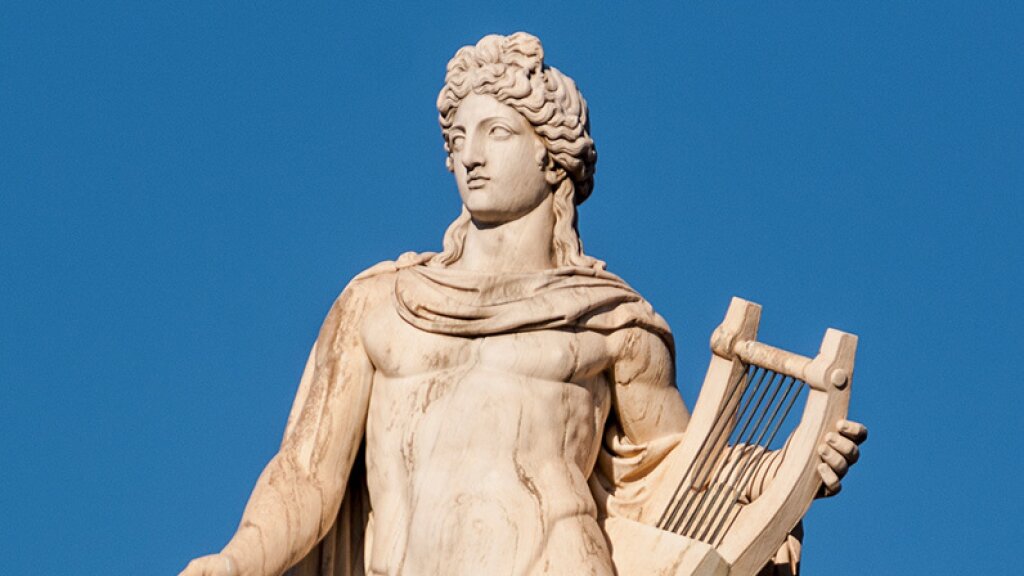This essay was originally published in Russian on colta.ru, and has been translated by Eliot Borenstein.
The Russian authorities have a special talent for creating holidays on a grand scale, and then pushing them on people with a cloying sentimentality. Thus it was possible to be sick to death of the Sochi Olympics before the games even started, while the endless rehearsals for the Victory Parade were equally nauseating. Many have noted that the Victory Day celebration turned into a manifestation of national insanity, while its recently-invented emblem, the St. George’s Ribbon (now a symbol of Putin’s regime), has become a symptom of collective psychosis.
Recently, Maria Stepanova laid out the context for this insanity, which she called a reckless immersion in a version of the past that is now inseparable from the present:
But the most important thing is this headlong immersion into the past. This is what prevents us both from looking to the future without describing it as Stalingrad or Potsdam, Tsushima or Hiroshima; the present is no longer experienced as one’s own, time without precedents, analogies, or models. This mania for the past resembles no other illness with which I am familiar, and it requires analysis and treatment. The lack of distance (or even the desire for distance) facilitates strange transmutations.
One of Stepanovа’s many observations directly concerns the Victory celebration: “When a Moscow car owner writes “To Berlin!” on his car, he is trying to erase the boundaries between himself and his victorious grandfather; his daily drive around the city—to work, to the store, to his dacha—becomes a victorious trip through conquered Europe. He becomes his own grandfather in a way, a soldier and liberator, a bronze monument, without investing anything more than a bucket of paint.” Truly, such a lack of differentiation is the point of these lumbering victory celebrations. Stepanova concentrates primarily on the existential aspects of this rejection of the present and immersion in the past. But I would like to take a moment to consider the political and social ramifications.
Past Imperfect
There is no doubt that the appeal to history in today’s Russia has no direct connection to the past. We are talking about a careful, selective construction of what contemporary scholars call “collective memory.” Collective memory is not only distinguished from historigoraphy—it is historiography’s polar opposite. Collective memory is a means for constructing a community, which in turn gives the community’s members a sense of identity. This, essentially, is its sole function.
The historian Allan Megill notes that when we call on collective memory, we only think we are remembering the past: in fact, we “remember” what is relevant to us now. We think of today in the categories of the past. Hence his proposed slogan: “Remember the past, think the past”. In America collective memory was a hot-button issue1980s and 1990s, with the appearance of numerous communities that were attempting to define their own identities (along ethnic and gender lines in particular, though not exclusively). The vaguer the identity, the more relevant the theme of collective memory becomes. It is through shared memory that members of the community establish their collective self.
In his book The Inoperative Community, Jean-Luc Nancy proposed an imaginary scenario behind the formation of collective identity. He wrote about people sitting around a campfire and listening to the myth of their shared origin:
“They were not assembled like this before the story; the recitation has gathered them together. Before, they were dispersed (At least this is what the story tells us at times), shoulder to shoulder, working with and confronting one another without recognizing one another. <…>He [the founder of the community] recounts to them their history, or his own, a story that they all know, but that he alone has the gift, the right, or the duty to tell. It is the story of their origin, of where they come from, and of how they come from the Origin itself—them, or their mates, or their names, or the authority figure among them. And so at the same time it is also the story of the beginning of the world, of the beginning of the assembling together, or of the beginning of the narrative itself….” When he describes this mythical scene containing echoes off Schlegel, Shelling, Görres, Bachofen, Wagner, Freud, Kerényi, Cassirer, and Goethe, Nancy shows it to be pure myth, part of collective memory. [1]
What is happening in Russia is directly linked to the crisis of national identity and the construction of a myth of origin. For the inhabitants of the Soviet space the dominant identity was the idea of the “Soviet person,” while the mythological founding event was the October revolution, whose celebration was conducted on the same neurotic, epic scale. Today they are trying to turn Victory Day into the same sort of foundational event. The Russian nation now is mythologically rooted in two events—the Christianization of Rus (somewhat compromised by its connection to Kiev) and the victory over Germany, which the authorities, it seems, are trying to give a thoroughly Russian face, downplaying the contribution of, say, the Ukrainians, in this victory. Russian citizens, atomized and marginalized by the lack of any political or civil communities, grasp at St. George’s Ribbon as a sign of membership to a community, to some sort of influential majority. The ribbon (scarf, costume, towel) becomes the symbol of a poorly constructed, long awaited identity.
The celebrations are so important because they serve as a ritual, allowing people to affirm their membership in what Benedict Anderson calls an “imagined community." Theoretically, Victory Day differs little from celebrations in tribal cultures. Emil Durkheim wrote in The Elementary Forms of Religious Life about the necessity of ritual reproduction of the “totemic groups,” united into a community of beliefs and myths: "So the rite serves and can serve only to sustain the vitality of these beliefs, to keep them from being effaced from memory and, in sum, to revivify the most essential elements of the collective consciousness. Through it, the group periodically renews the sentiment which it has of itself and of its unity; at the same time, individuals are strengthened in their social natures. The glorious souvenirs which are made to live again before their eyes, and with which they feel that they have a kinship, give them a feeling of strength and confidence: a man is surer of his faith when he sees to how distant a past it goes back and what great things it has inspired. " Durkheim is writing about Warramunga tribal ceremonies, but this could just as easily be applied to the Victory Day.
In such a context any accusations of historical inaccuracy are missing the point. Maurice Halbwachs, who was the first to examine collective memory, defined the differences between collective memory and historiography: historiography is interested in the changes that are essential to history; it divides the flow of time into discrete periods and events, divided by intervals that mark difference. Collective memory is focused on the similarities: its very purpose is to support the illusions of the group’s unchanging essence. Over the years the community changes its composition, and many simply die, but collective memory must ignore these changes and emphasize only continuity and constancy, which are the basis of any identity. Moreover, collective memory discards everything dubious and negative that cannot help form unity. History always presupposes an external perspective, which allows for the production of difference; collective memory is located within a community and therefore is always connected exclusively to the selective, local collection of events. This internal perspective and the imperative to support identity lead to peculiar perspectives:
The collective memory is a record of resemblances and, naturally, is convinced that the group remains the same because it focuses attention on the group, whereas what has changed are the group's relations or contacts with other groups. If the group always remains the same, any changes must be imaginary, and the changes that do occur -in the group are transformed into similarities. Their function is to develop the several aspects of one single content-that that is, the various fundamental characteristics of the group itself. [2]
This situation is very important. Collective memory transforms differences into similarities and constructs identity at the expense of turning everything into constantly reproduced and undifferentiated stereotypes. Collective memory is tautological as a matter of principle: today’s owner of a German car shares his identity with his grandfather, who fought the Nazis. All differences are erased, and history itself is liquidated along with them.
War Games
Today’s Russian politics are inexplicable with the explosion of collective memory and its concomitant distortion of consciousness. Unable to propose any new accomplishments, the authorities position themselves as the heirs of a mythological past and root their politics in myths that Nancy wrote about. This is what allows the St. George’s Ribbon, which goes back to the time of Catherine the Great and was used for a variety of military honors in the past, to become the sign of loyalty to Putin. Today’s politics legitimize themselves through the removal of difference with the past, and the past becomes a realm of undifferentiatable tautological resemblances. The war in Ukraine is described in the mass media as a war with fascists and Banderovites, Americans are shows in the light of the Cold War and Soviet propaganda. Politics becomes a reconstruction of the past, and, of course, it is no accident that Girkin, the “military hero” of the Donbass, had until recently been known as a war reenacted. Substituting historical consciousness with collective memory is impossible without the help of the mass media, which first turn completely muddle their audience’s conception of history, and then form the past into a collection of tautological stereotypes.
Collective memory is often described as a system of concentric circles. In the very center is the local memory of events. This memory is full of contradictory details and ambivalence. Thus the gradual disappearance of the participants in the events is ideal. The natural disappearance of the real war veterans only allows the transformation of what had once been living experience into collective myth. The translation of “memory” from a local zone to the realm of shared fantasy is accomplish by the media, always oversimplifying the essence of what happened and “correcting the complications” so that the masses can easily understand. The media facilitate an unambiguous connection between the present and the past, transforming the chaos of the present day into something that can’t be distinguished from the glorious past. It is the mass media that transform differences into similarities, with stunning results.
This neurotic muddling of identity is the soil on which today’s Russian political power grows, since the country’s leadership can find no other way to justify its actions than falsifying their resemblance to the mythological events of the past.
[1] Jean-Luc Nancy. The Inoperative Community. Edited by Peter Connor. Translated by Peter Connor, Lisa Garbus, Michael Holland, and Simona Sawhney. Minneapolis: University of Minnesota Press, 1991. 43-44.
[2] Halbwachs, Maurice. The Collective Memory. Translated by Francis J. Ditter, Jr. and Vida Yazdi Ditter. New York: Harper Colophon, 1980. 86-87



